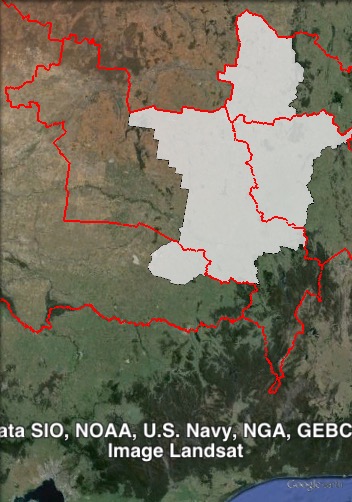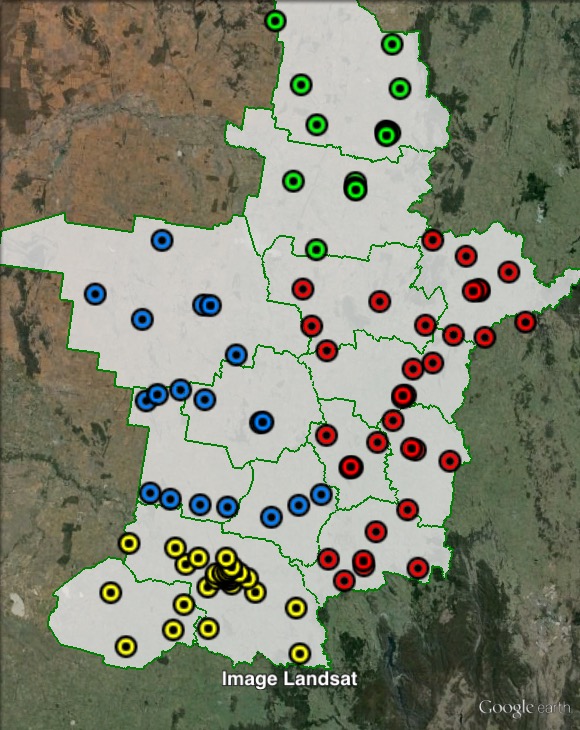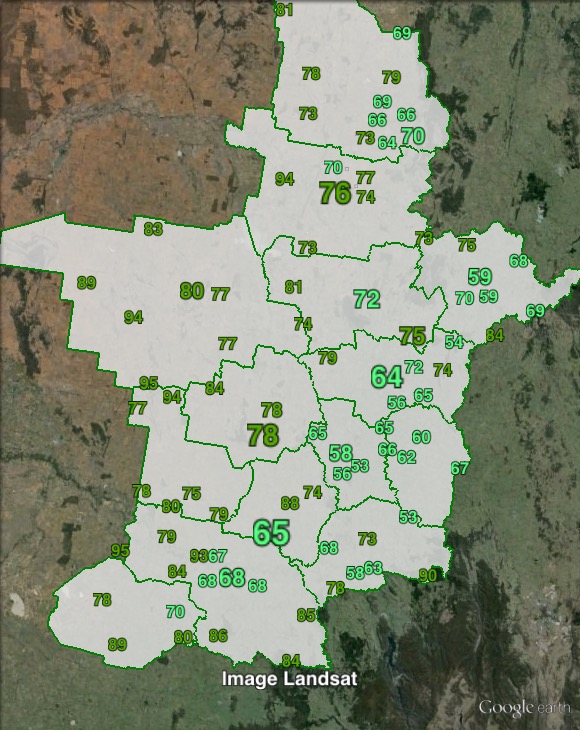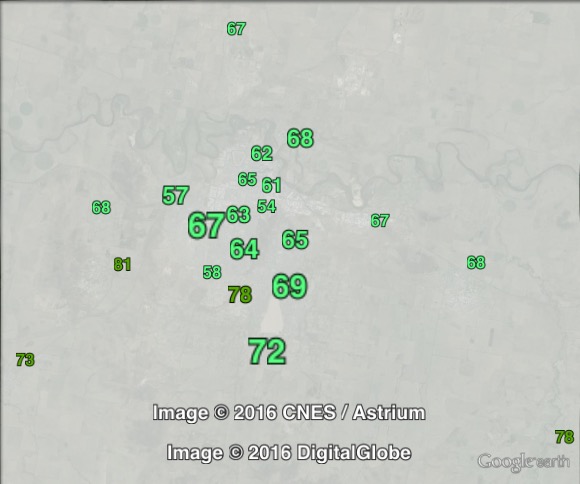NAT 19.0%
Incumbent MP
Michael McCormack, since 2010.
Geography
South-Western NSW. The seat stretches from Wagga Wagga and Lockhart in the south to Parkes and Forbes in the north, and also covers Cootamundra, Young, Cowra, Gundagai, Grenfell, Junee and Temora.

Redistribution
Riverina rotated from an east-west seat to a north-south seat. The seat lost Tumut and Tumbarumba to Eden-Monaro on its eastern edge and lost Griffith, Leeton, Narrandera and Carrathool council areas to Farrer at the western edge of the seat. Riverina then gained Lockhart from Farrer, Parkes and Forbes from Calare and Cootamundra, Young, Cowra, Grenfell and Harden from Hume. These changes cut the Nationals margin from 21.2% to 19%.
History
Riverina is an original federation electorate, although it was renamed as ‘Riverina-Darling’ from 1984 until 1993. It has been dominated by conservative parties, namely the Country/National Party since its emergence in the 1920s. Having said that, the ALP has managed to win the seat on a number of occasions, most recently in 1977.
The seat was first won in 1901 by Protectionist candidate John Chanter, who had been a member of the State Parliament since 1885. At the 1903 election, Free Trade candidate Robert Blackwood defeated Chanter by five votes. An appeal saw the result overturned, and Chanter won the ensuing by-election in 1904.
Chanter continued to serve as a Protectionist until 1909, when he refused to support the Fusion of conservative parties to form the Liberal Party, and instead joined the Labor Party. He managed to win reelection for the ALP in 1910, but lost his seat in 1913 to Liberal candidate Franc Falkiner. Chanter again managed to win the seat back in 1914, and Falkiner went on to serve one term as Member for Hume from 1917 to 1919.
Chanter left the ALP in 1916 over the issue of conscription and joined the new Nationalist Party. He held the seat for them until 1922, when he was defeated by William Killen, candidate for the new Country Party.
Killen held Riverina for the Country Party until his retirement in 1931, when he was succeeded by Horace Nock. Nock served as a Minister in the Menzies government in 1940, but lost his seat later that year to ALP candidate Joseph Langtry.
Langtry was re-elected in 1943 and 1946 before losing Riverina to the Country Party’s Hugh Roberton in 1949.
Roberton held Riverina for sixteen years. He was made Minister for Social Services in 1956, serving in that role until 1965, when he left Parliament to become Australia’s Ambassador to Ireland. The ensuing by-election was won by Adam Armstrong, who held the seat until 1969, when he lost to the ALP’s Al Grassby.
Grassby was appointed Minister for Immigration following the election of the Whitlam Labor government in 1972, and was a fierce advocate of multiculturalism in the role, however he failed to win reelection in 1974, losing Riverina to the Country Party’s John Sullivan.
Sullivan held Riverina for two terms, losing to the ALP’s John FitzPatrick in 1977. FitzPatrick lost in 1980 to the National Country Party’s Noel Hicks.
Hicks held Riverina for most of the next two decades. The seat was renamed Riverina-Darling in 1984 but reverted to its original name in 1993. Hicks retired in 1998, and the Nationals candidate Kay Hull retained the seat. Hull held the seat from 1998 until her retirement in 2010.
In 2010, Nationals candidate Michael McCormack. was elected. The Liberal Party challenged for the Nationals seat, but only managed 16.5% and failed to overtake the Labor candidate. McCormack was re-elected in 2013.
Candidates
- Michael McCormack (Nationals)
- Richard Foley (Independent)
- Philip Langfield (Christian Democratic Party)
- Tim Kurylowicz (Labor)
- Glenn O’Rourke (Family First)
- Kevin Poynter (Greens)
Assessment
Riverina is a very safe Nationals seat.
2013 result
| Candidate | Party | Votes | % | Swing | Redist |
| Michael Mccormack | Nationals | 52,062 | 59.2 | +14.4 | 58.1 |
| Tim Kurylowicz | Labor | 17,970 | 20.4 | -1.8 | 22.0 |
| Lex Stewart | Palmer United Party | 4,545 | 5.2 | +5.2 | 5.0 |
| Ros Prangnell | Greens | 3,169 | 3.6 | -0.9 | 3.8 |
| Paul Funnell | Democratic Labour Party | 3,137 | 3.6 | +3.6 | 2.5 |
| Andrew John Lamont | Bullet Train For Australia | 2,405 | 2.7 | +2.7 | 1.6 |
| Keith Pech | Christian Democratic Party | 1,314 | 1.5 | +0.1 | 1.7 |
| Lorraine Sharp | Australia First | 1,287 | 1.5 | +1.5 | 1.0 |
| Norm Dunn | Katter’s Australian Party | 1,044 | 1.2 | +1.2 | 1.4 |
| Kim Heath | Rise Up Australia | 1,040 | 1.2 | +1.2 | 0.7 |
| Others | 2.1 | ||||
| Informal | 6,592 | 7.5 |
2013 two-party-preferred result
| Candidate | Party | Votes | % | Swing | Redist |
| Michael Mccormack | Nationals | 62,612 | 71.2 | +3.0 | 69.0 |
| Tim Kurylowicz | Labor | 25,361 | 28.8 | -3.0 | 31.0 |

Booth breakdown
Booths have been divided into four parts:
- East – Cootamundra, Cowra, Gundagai, Harden, Weddin and Young council areas
- North – Forbes and Parkes council areas
- South – Lockhart and Wagga Wagga council areas
- West – Bland, Coolamon, Junee and Temora council areas
The Nationals won a large majority of the two-party-preferred vote, ranging from 63.6% in the east to 76.4% in the west.
| Voter group | NAT 2PP % | Total votes | % of votes |
| South | 67.5 | 24,843 | 26.6 |
| East | 63.6 | 16,410 | 17.5 |
| West | 76.4 | 10,655 | 11.4 |
| North | 72.0 | 9,803 | 10.5 |
| Other votes | 68.5 | 31,822 | 34.0 |




Personal votes have been very important here. Grassby was only Labor candidate who could have held seat on its pre-1977 boundaries. Adding Broken Hill should have made it a Labor seat in 1980s but Hicks had a big personal vote and benefited by Fitzpatrick’s retirement in 1980.
Interesting to see that the entire seat shows 2PP going the Nationals’ way (although not by much in some places). Having said that, Wagga’s voting patterns are not as solidly National. Perhaps urban issues are gaining precedence, and we will see a different pattern when the city gets big enough to have its own seat?
I think you’re mistaken in assuming Wagga will one day have its own seat.
In fact the opposite is far more likely. Given the continuous population decline (in relative terms) of rural NSW – and barring an increase in the size of parliament – in the long term I expect Riverina will be abolished. (It’s been mooted before.) Wagga would then be drawn into Farrer alongside Albury.
That’s a good point, David…and not a solution I’d considered, but it makes sense.
As of the 2011 Census, Wagga City Council (quite a large area) had 59463 citizens, and Albury had 47809 people. Adding Hume and Lockhart Councils yields about another 15,000 electors. Altogether, that’s about 120,000 people, below the 2014 quota of 158,2986 given here: http://www.aec.gov.au/Electorates/Redistributions/calculating-entitlements.htm
But if changes need to be made elsewhere, it could happen sooner than I’d realised…
In any case, I think that could make Farrer an interesting seat in future. Two relatively large population centres where the conservative vote is lower than the rural hinterland, and one used to having a Liberal instead of a National member.
how much is common to Riverina of 1969 and now
very little
Here is a map of the 1969 Riverina boundaries.
I think there’s practically no overlap.
thx Ben
My prediction: Easy National hold.